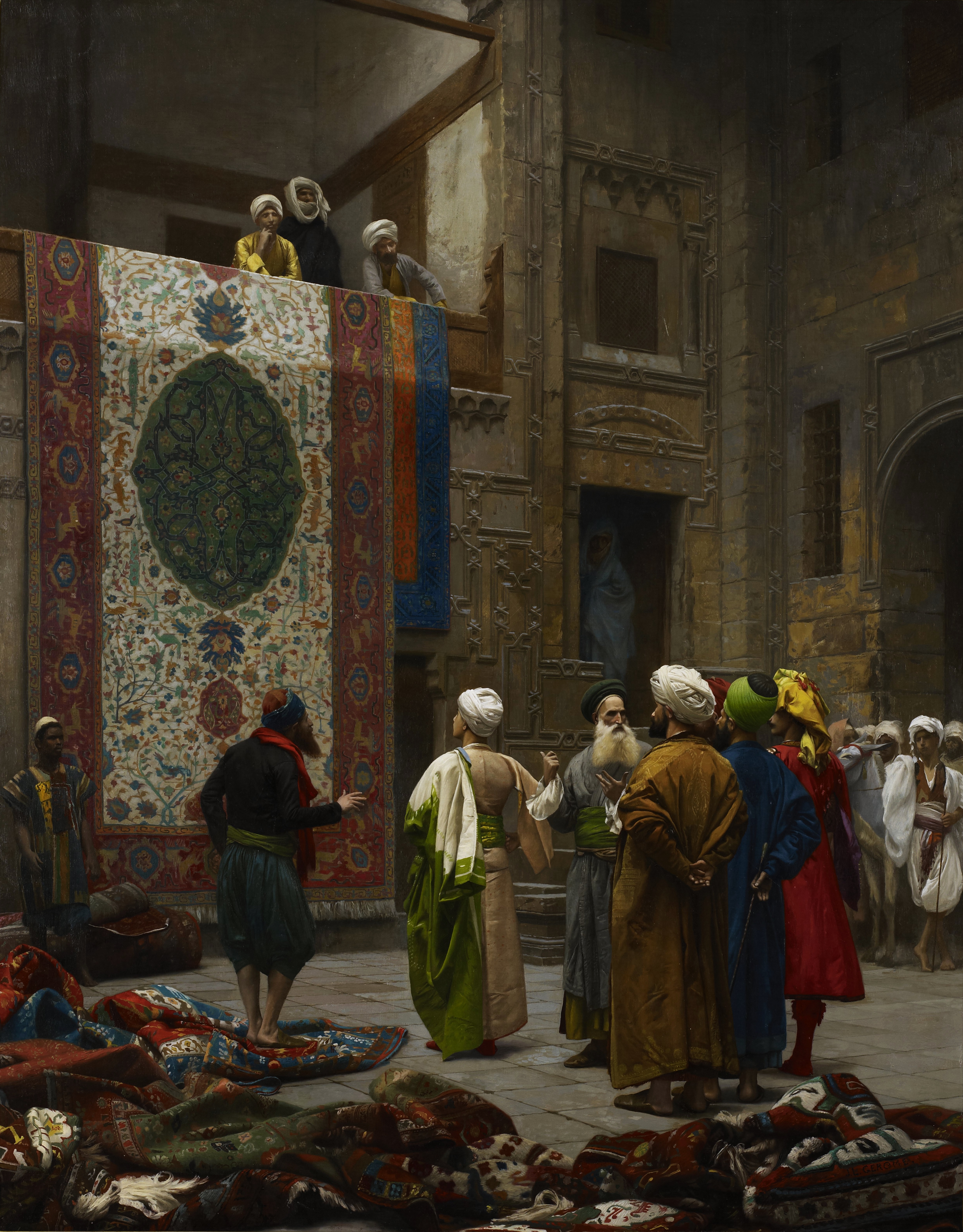I just saw this painting in person (again) last night at the Nelson-Atkins Museum. I always love visiting that place. Frederic Edwin Church is perhaps my favorite American landscape painter of the 19th century. All of his landscapes are these grand scale masterpieces that always seem to have this majestic glow to them. He's somewhat characterized as a painter of Romanticism, and his paintings show it. Church kept in close friendship with Thomas Cole, founder of the Hudson River School. This painting by Church, my local bias notwithstanding, is among his greatest pieces.
Okay, so I actually have a lot of bias with this painting. Not only is it local to Kansas City, but I also happen to have been blessed with a trip to the Holy Land that allowed me to see Jerusalem from this very spot on top of the Mount of Olives. And as I look at this painting, I can even identify some of the buildings that are shown. This is not at all how the actual Jerusalem looks today, but this painting shows how some things about this holy city have not changed.
Although you can't see it from this painting, but to the far right and bottom corner, as you move along down the hill, you would be able to see a small garden of olive trees which is of course the Garden of Gethsemane. Church has painted a couple of very beautiful olive trees that look very much like the ones you would see today. One of the things that stands out in the city, and in the painting is the Dome of the Rock. We didn't actually visit the Dome, but we did visit a little place just behind it called the Western Wall of Jerusalem, or sometimes called the "Wailing Wall." It was amazing just to touch that enormous stone wall and to see the thousands of written prayers stuffed in the cracks of the wall. Just to the right of the Dome of the Rock in the painting, you can see a couple of small domes sticking up above the rest. They're small, but still more prominent than the ones surrounding. I believe this is supposed to be the Church of the Holy Sepulchre, according to my knowledge of the city. And the way we made it to that site was actually pretty amazing.
After visiting the Western Wall, we walked a long road that led us to the Via Dolorosa, which is the road that Jesus walked with the cross on his back to his crucifixion. And along the Via Dolorosa walk, we could see the various Stations of the Cross that were marked with Roman numerals. The Via Dolorosa was a long, crowded walk along a very narrow road which was more of a walkway with all sorts of touristy merchants on either side. It was sadly very commercialized. But then again, I imagine that Jesus was even walking through this road and there were probably some markets of some sort on either side of him even in his day. But probably nothing called "The Holy Rock Cafe" (yes, seriously). Anyway, by the time we reached the end of the Via Dolorosa, we were met by this small, subtle sign that simply said "Holy Sepulchre" with a little entryway, and all of a sudden we were at the Church of the Holy Sepulchre, and there were what had to be thousands of people waiting outside to get in. And when we finally did get in, it was like a pack of sardines. It was very stressful, and our tour guide Nadav actually warned us and instructed us at the very beginning before we got inside to push our way through if we had to. But no matter what, we had to stay as together as we could.
I could go on and on about my experience in Jerusalem, but this goes to show why this is a favorite painting for me. Just the sight of it brings back lots of memories of my trip to Israel, and as chaotic as it was at times, it is unquestionably one of the most beautiful places on Earth.
 |
Jerusalem from the Mount of Olives
oil on canvas
1870 |

















